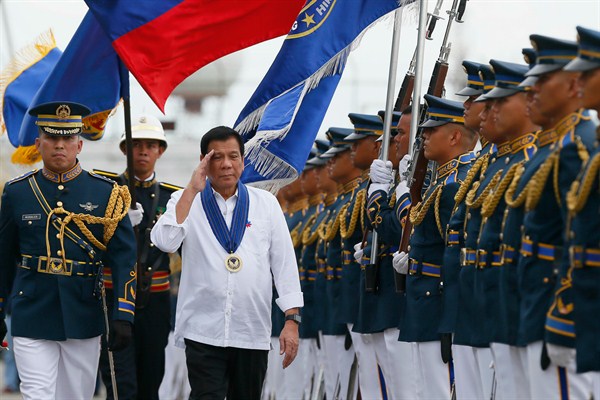Over the past decade, the United States and the Philippines have bolstered what was already a strong strategic and diplomatic relationship with deep historical roots and a 65-year treaty alliance. During the George W. Bush administration, after 9/11, the U.S. launched a training and assistance program for the Philippine armed forces, designed to help combat terrorist networks based in the southern Philippines, especially Abu Sayyaf. For a time, a significant detachment of U.S. Special Forces was based there, training Philippine soldiers.
Under the Obama administration, the U.S. and the Philippines have moved even closer together. For the past six years under President Benigno Aquino III, the Philippines was a major recipient of increased U.S. assistance for maritime security in Southeast Asia—the result of frequent travels to Washington by Philippine officials to plead for aid to modernize their navy and coast guard. Two years ago, Manila and Washington signed a 10-year enhanced defense partnership that is supposed to allow U.S. forces to rotate through the Philippines for extended periods of time at local bases.
But since Rodrigo Duterte was elected president of the Philippines earlier this year, he has staked out a drastically different approach to Manila’s relations with the U.S.—or at least, he appears to have, based on his bombastic rhetoric. In his latest tirade Tuesday, the new Philippine president said that Obama could “go to hell” for criticisms of Duterte’s vigilante war on drugs and suggestions the U.S. might refuse to sell his government weapons, although that seems unlikely. Last week, Duterte likened himself to Hitler, boasting he would potentially kill 3 million drug dealers and users in the Philippines.

